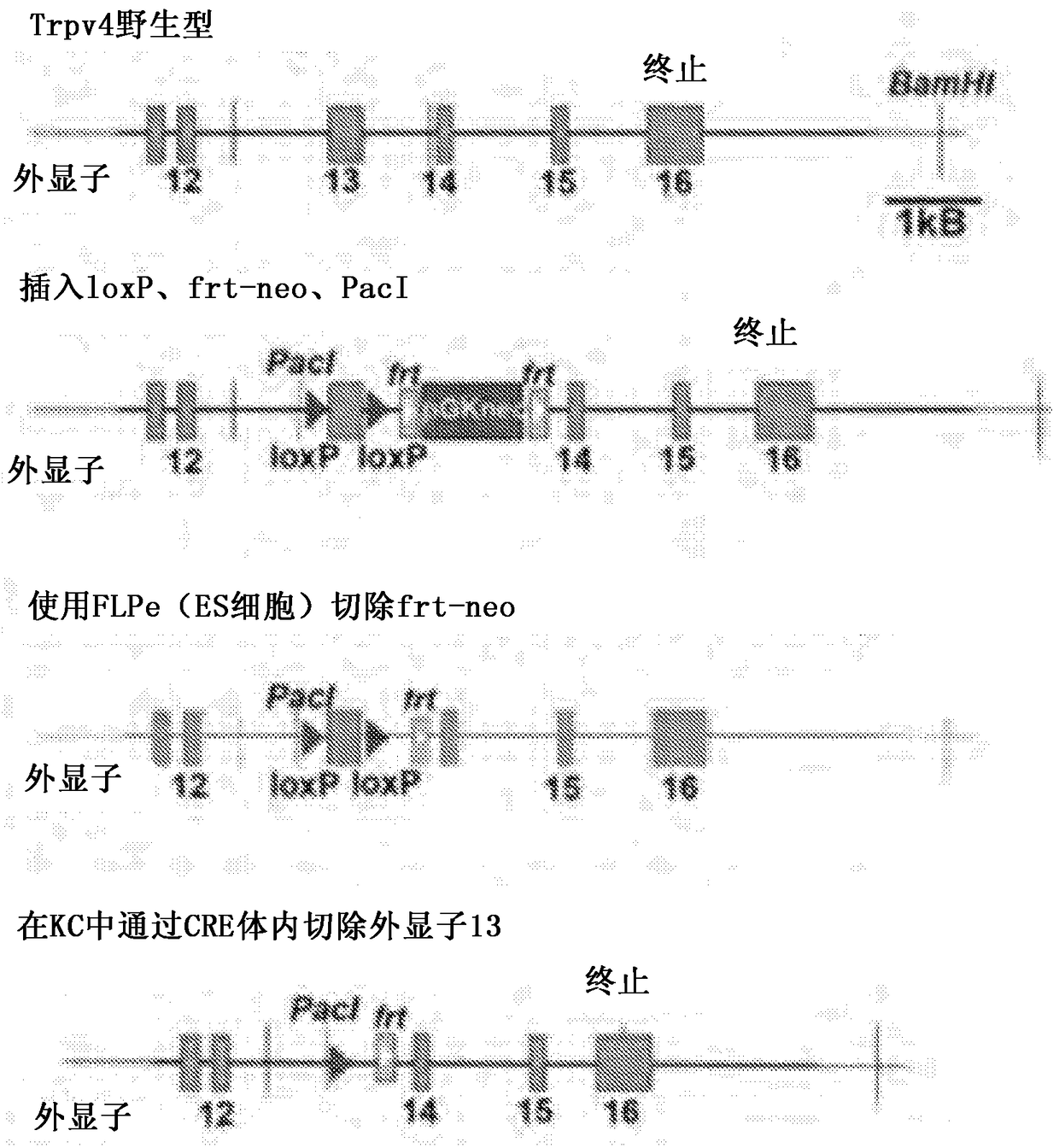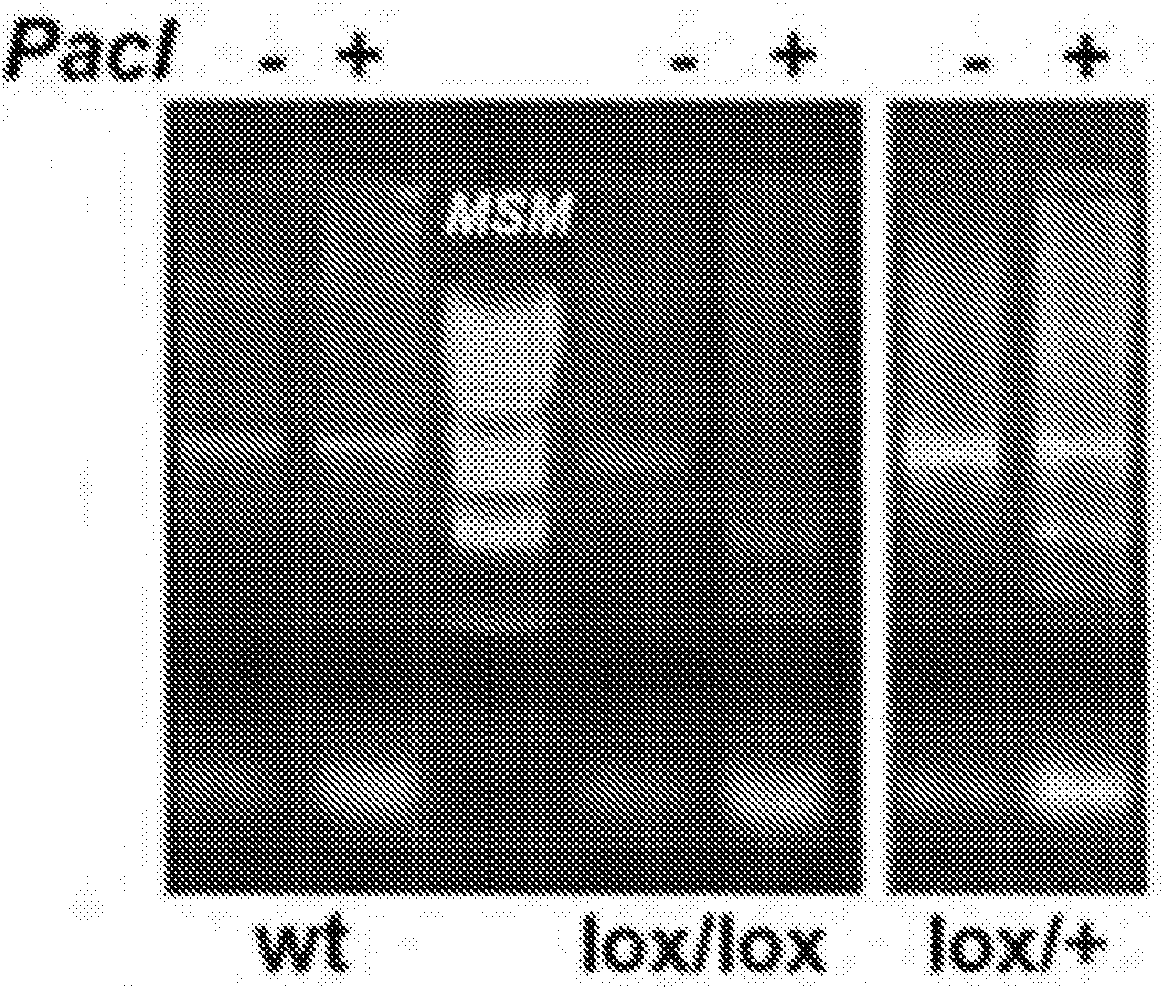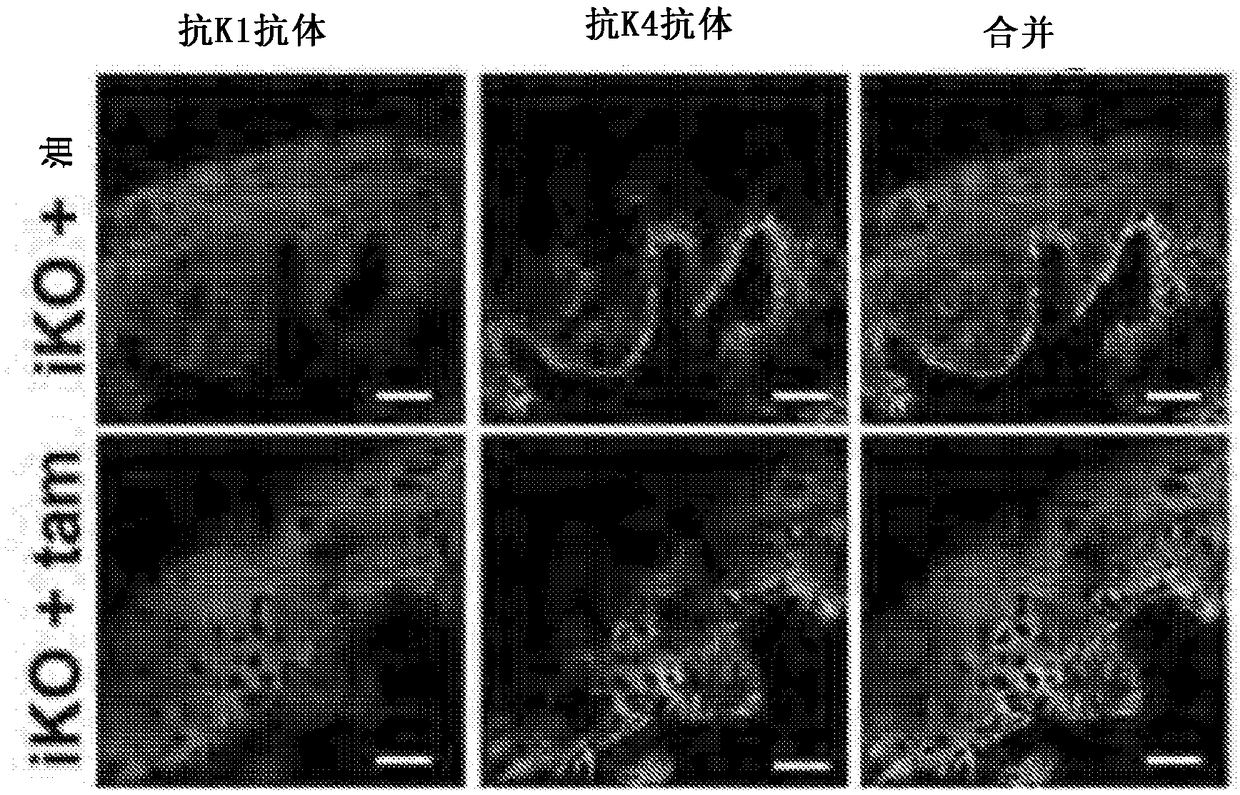Small molecule dual-inhibitors of trpv4 and trpa1 for sanitizing and anesthetizing
A technology of inhibitors and anesthetics, applied in the field of small molecule dual inhibitors of TRPV4 and TRPA1 for disinfection and anesthesia, which can solve the problems of not knowing or not knowing the specific inhibitors of TRPV4 and TRPA1
- Summary
- Abstract
- Description
- Claims
- Application Information
AI Technical Summary
Problems solved by technology
Method used
Image
Examples
Embodiment 1
[0206] Example 1: Materials and methods
[0207] animal. The genomic locus of Trpv4 was engineered such that a loxP site surrounds exon 13 encoding TM5-6. This mutation is transmitted in mice crossed with K14-CRE-ERtam mice, allowing ((Trpv4lox / lox)X(K14-CRE-ERtam)) mice to be administered by oral gavage at 2-4 months of age in Tamoxifen in 0.3 mL corn oil was administered at a dose of 6 mg / day for 5 consecutive days plus a booster at 2 weeks after the last dose for induction. Male and female mice were equally induced. The efficiency of knockdown was verified by qRT-PCR on Trpv4 using the sense primer 5'-CCTGCTGGTCACCTACATCA (SEQ ID NO:1) and the antisense primer 5'-CTCAGGAACACAGGGAAGGA (SEQ ID NO:2), where the former primer was located outside Exon 13. All animal experiments described here were performed in full compliance with NIH and Duke University internal guidelines and under legitimate IACUC protocols.
[0208] Using the same genomic clone used to generate Trpv4- / -...
Embodiment 2
[0252] Example 2: Generation of epidermis-specific, tamoxifen-inducible Trpv4-null mice
[0253] To overcome developmental issues that may arise in gene-targeted mice with ubiquitous deletions, we developed an inducible conditional system to assess the role of TRPV4 in UVB-mediated skin irritation, inflammation, and sensory sensitization. Using mouse ES cells, we first established Trpv4lox / lox mice such that the size-tunable exons encoding transmembrane domains 5, 6 and the intervening pore loop are flanked by loxP elements. After crossing with FLPe mice to remove selection markers flanked by frt elements, these animals were treated with tamoxifen (tam) inducible keratin-14 (K14)-CRE ER Transgenic mice were mated. An overview of constructs and genotyping is at Figure 1A -B in.
[0254] We focused our analysis on the paw pad skin of adult (2 month old) glandular mice as it more closely resembles human skin. Tamoxifen induction caused a highly efficient knockdown of Trpv4 e...
Embodiment 3
[0256] Example 3: Pain response behavior induced by UVB exposure is dependent on epidermally expressed TRPV4
[0257] Underscored the specificity of Trpv4 gene targeting, so that footpad-innervated peripheral sensory neurons still showed robust TRPV4 expression ( Figure 1D ). This allowed us to assess whether epidermal Trpv4 deficiency critically affects UVB-mediated pain response behavior. For this purpose, we analyzed two relevant sub-modalities - thermal and mechanical stimulation - and compared our iKO mice with full deletion Trpv4- / - and their wild-type (WT) controls ( Figure 3B ). At 48 hours after UV exposure, both tam-treated iKO and Trpv4- / - mice exhibited greater response to noxious radiant heat (Hargreaves test) as well as noxious mechanical stimulation (using automated von Frey hair test) much lower sensitivity. We conclude that epidermis-specific TRPV4 deficiency is equivalent to global TrpV4 ablation in reducing UVB-induced behavioral sensitization to radia...
PUM
 Login to View More
Login to View More Abstract
Description
Claims
Application Information
 Login to View More
Login to View More - R&D
- Intellectual Property
- Life Sciences
- Materials
- Tech Scout
- Unparalleled Data Quality
- Higher Quality Content
- 60% Fewer Hallucinations
Browse by: Latest US Patents, China's latest patents, Technical Efficacy Thesaurus, Application Domain, Technology Topic, Popular Technical Reports.
© 2025 PatSnap. All rights reserved.Legal|Privacy policy|Modern Slavery Act Transparency Statement|Sitemap|About US| Contact US: help@patsnap.com



